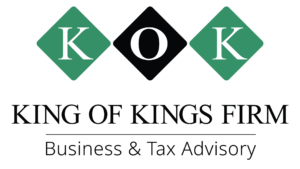How to Make Changes to Your Tax Return After Filing: A Guide for Small Business Owners
As a small business owner, tax season can be particularly challenging. With so many details to track, it’s easy to make mistakes on your tax return. Whether you forgot to include some income, missed out on a crucial deduction, or realized there was an error after you’ve already filed, you might be wondering if you can make changes to your tax return. Fortunately, the IRS allows taxpayers to amend their returns under certain conditions. Here’s everything you need to know about making changes to your tax return after filing.
Why You Should Amend Your Tax Return
There are several reasons why you might need to amend your tax return. Here are some of the most common scenarios:
- Correcting Errors: Mistakes happen, and sometimes they happen on your tax return. If you made a math error, entered incorrect information, or missed a form, amending your return can correct these mistakes.
- Claiming Deductions or Credits: Perhaps you missed out on claiming a significant deduction or credit that you were eligible for. By amending your return, you can include these items and potentially reduce your tax liability.
- Reporting Additional Income: If you received additional income that you didn’t report on your original return, it’s crucial to amend your return to include this income. Failing to do so can result in penalties and interest.
- Changing Filing Status: Sometimes life changes, such as getting married or divorced, may require you to change your filing status. Amending your return allows you to update this information.
- Fixing Dependent Information: If you need to change the number of dependents you claimed or correct their information, an amended return can resolve these issues.
How Long You Have to Refile
The IRS generally allows taxpayers to amend their returns within three years from the date they filed their original return or within two years from the date they paid the tax, whichever is later. It’s important to note these timelines because missing the window could mean losing out on potential refunds or facing penalties for unreported income.
For example, if you filed your 2022 tax return on April 15, 2023, you have until April 15, 2026, to file an amended return. If you paid your tax on July 15, 2023, you would have until July 15, 2025, to amend your return.
When the IRS Won’t Allow You to Refile
While the IRS is generally accommodating when it comes to amending returns, there are situations where they won’t allow you to refile:
- No Tax Impact: If the changes you want to make don’t affect your tax liability, the IRS won’t process the amendment. For example, correcting your address won’t require an amended return.
- Frivolous Claims: The IRS won’t process amendments that include frivolous claims or arguments that don’t comply with tax law.
- Closed Tax Years: If the statute of limitations has passed, you can’t amend your return for that tax year. As mentioned, this is generally three years from the date of filing or two years from the date of payment.
- Pending Issues: If your return is currently being audited or reviewed by the IRS, you should wait until the process is complete before filing an amendment. Filing an amended return during an audit can complicate the process.
How to Make Changes to Your Tax Return After Filing
If you’ve determined that you need to amend your tax return, the process is straightforward:
- Obtain Form 1040-X: The IRS Form 1040-X is used to file an amended tax return. You can find this form on the IRS website.
- Fill Out the Form: Complete the form with the correct information. You’ll need to explain why you’re amending your return and provide the necessary details.
- Attach Supporting Documents: Include any forms or schedules that are affected by your amendment. For example, if you’re claiming a new deduction, include the relevant documentation.
- Mail the Form: Unlike regular tax returns, amended returns must be mailed to the IRS. Be sure to send it to the correct address for your area.
- Wait for Processing: The IRS takes about 16 weeks to process amended returns. During this time, you can check the status of your amendment using the “Where’s My Amended Return?” tool on the IRS website.
Next Steps
Navigating the complexities of amending a tax return can be daunting, especially for small business owners who already have a lot on their plates. Mistakes can be costly, and time is of the essence. That’s where the experts at King of Kings Firm come in. Our Tax Planning expertise has uncovered hundreds of thousands of dollars in overpaid taxes for our clients. If you need assistance with amending your tax return or learn more about how we can help you maximize your tax savings, contact us today. We’re here to help ensure your financial well-being.
Don’t let mistakes on your tax return go uncorrected. Trust the professionals at King of Kings Firm to guide you through the amendment process and secure the best possible outcome for your financial future.






